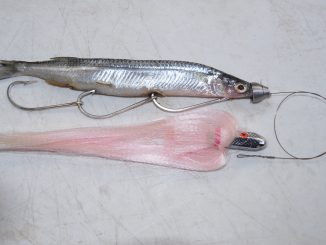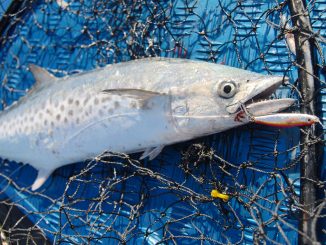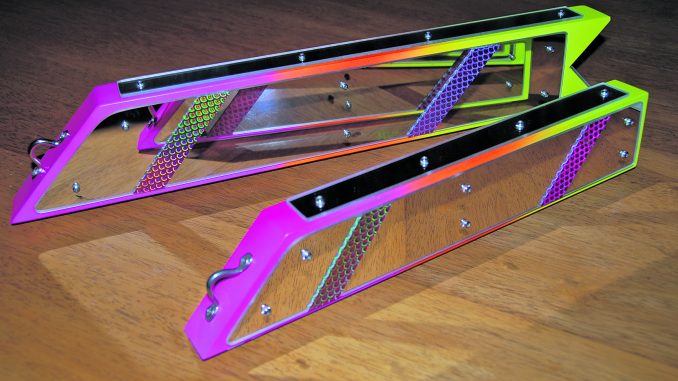
by Gordon Macdonald •
Offshore trolling is extremely popular these days due to the quality of fishing available and the excitement that every hook-up brings. You do not need a floating hotel to get out and troll up some awesome pelgics, a moderate craft of 4.5m or so will do in the right conditions.
The waters off Brisbane will require a degree of travel to get out past Moreton and Straddie to the fish-rich waters, however productive areas just out from the Gold Coast and Sunshine Coast can start from less than a 1km past the bar. Anglers will often stock up with an array of different trolling lures for this pursuit, yet forget one of the other important factors in their spread, a teaser. Let’s look at why these help and some of the types on offer.
WHY TEASE?
Understanding how you benefit from having a teaser will require that you first understand why fish are attracted to them.
To a pelagic species feeding in the open blue ocean, either down deep or closer to the surface, the isolated patch of white water and turbulence created by your boat’s propellers initially looks like a school of baitfish close to the surface. The churning water and the noise created by your propellers is the best fish attractor you can get, however adding other factors into the turbulence to enhance this image can greatly increase your chances of attracting a predating fish closer.
When a baitfish school is pushed to the surface and being set upon by hungry predators, there’s a lot of splashing, flashing and audible features noticed from below. The noise of the boat, motor and churning white-water does a reasonable job of initially getting a predators attention, however, by adding more splashing and flashing to the equation we are more likely to raise fish and have them excited and hot to trot by the time they do rise.
Once they are fooled into thinking the trailing white-water is a bait school and rise to investigate they will not find any baitfish, only your baitfish imitating lures. If they are hungry, or excited enough by the deception, they will strike the lure and hopefully you will be hooked up solid to a marauding marlin, wahoo, sailfish, mackerel, tuna, mahimahi or other pelagic.
TEASER TYPES
Anything that can be added to the equation, which flashes or splashes will help to emulate the sun’s reflection off the flanks of a darting baitfish or marauding predator, the splashing created by frantic baitfish and even the diving and feeding antics of birds attacking from above.
Whilst I have even seen a string of Fosters cans used for a teaser (and it did get crunched by a big Cairns black) there are several types of teasers readily available from suppliers of game fishing tackle that will enhance your chances when trolling offshore. Although there are several variations of these teasers, the three main types are mirrored teasers, birds and daisy chains.
Mirrors
One of the more productive teasers types in my opinion are the mirrored varieties. There are many types of these with the most popular being the witchdoctor style, which are basically a block of timber with a slant face on the towing end and mirrors along the side. As these are towed through the water they rock from side to side putting big flashes of reflected light into the water.
There are many quality locally produced versions and all work in pretty much the same way with slight differences to the basic size and finish of each. These are usually positioned between 4m-10m behind the boat in a patch of clean (undisturbed) water between the prop wash and the wash coming off the side of the boat.
These flashes of light can be seen from a considerable distance below the boat and will entice predators in from quite some distance away. Obviously, they are less effective in cloudy or dull light conditions but still worth having in the water in my opinion.
As they will generally sink rapidly when at rest, they should be the first thing retrieved after a hook-up, otherwise they may tangle with the propeller if you engage the propellers.
With mirrored teasers costing between $120-$200, it is wise to store them in a dry area and wash them with warm soapy water after use to prolong their life. Mine has served me for about 15 years now and I consider that mirrored teasers are a small investment for a big return, considering the money spent on lures, fuel, tackle and other ancillaries.
Mirrored teasers will entice fish in from a greater distance than most other teasers, especially in sunny conditions when they reflect big flashes into the water.
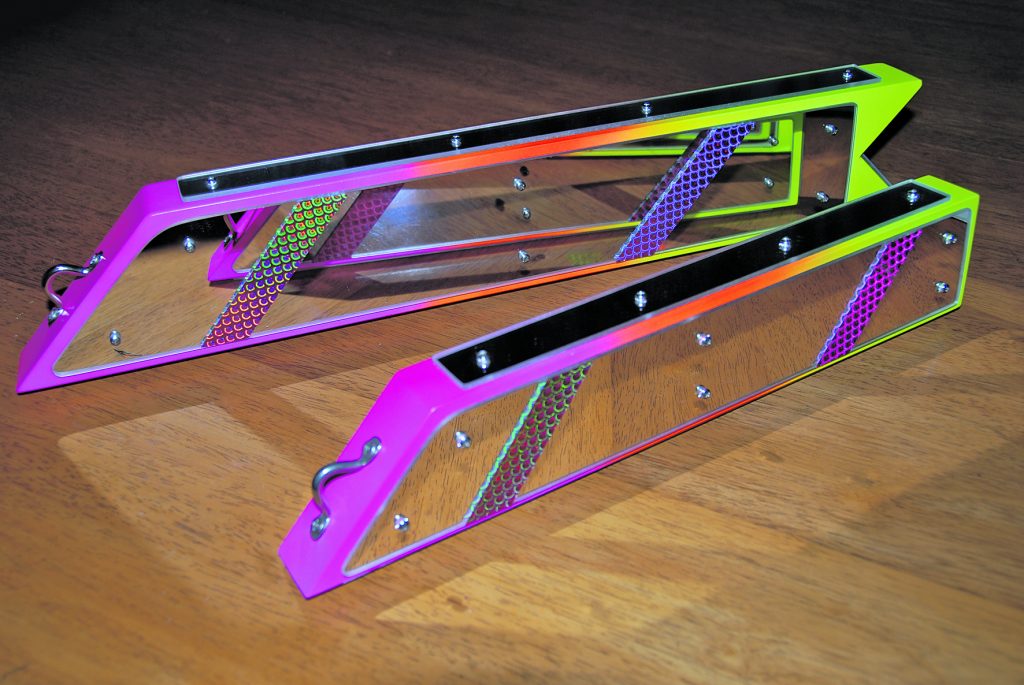
Birds
Another popular teaser is the bird. These are commonly made from timber or various types of plastic and have a wing protruding from each side. When towed behind the boat they will skim across the surface, rocking from side to side with the wings dipping and splashing into the water. The surface disturbance they make is similar to that produced as a bird’s wings dip the surface as they pick up hapless baitfish from the surface, but basically they just help to enhance the overall commotion at the back of the boat.
Birds can be towed from any position behind the transom or are sometimes trolled from the part way up an outrigger on larger boats, being controlled and retrieved from the bridge. On smaller craft they are simply run from the transom, often as part of a larger teaser conglomeration, sometimes with a swimming gar or other enticement that a pelagic fish can bite and get a taste of, which will generally increase their aggressiveness.
There are numerous birds on the market, some commercially made and others are local cottage industry products and you will probably pay between $20-$50 for one.
There is an array of birds available on the market yet all splash across the water’s surface in relatively the same way.
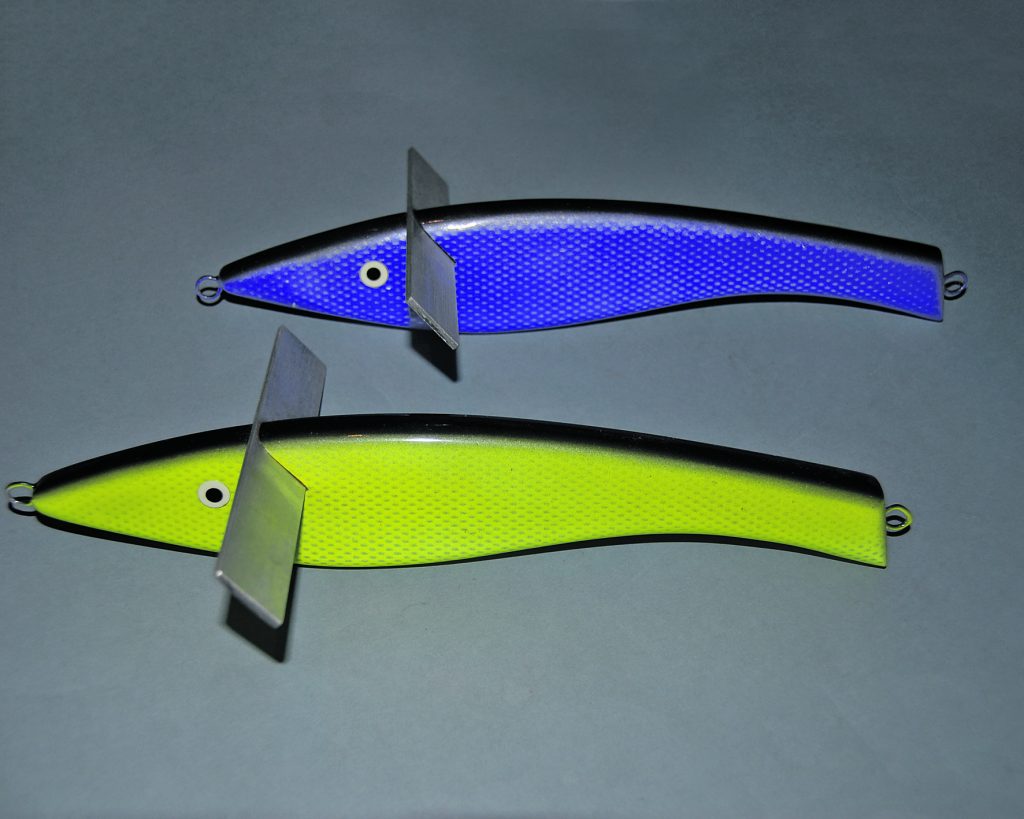
Daisy chains
Normally towed behind a bird or just by themselves, daisy chains are a series of squid or baitfish profiles. Apart from the visual effect and profile, these will splash across the surface and create quite a commotion. They are generally brightly coloured, often glow green or bright pink, and a single string will generally consist of 4-8 squids, baitfish profiles or mini-birds which are varying lengths apart, generally between 0.5-51m.
Often these are rigged on a spreader bar, which is a thick stainless wire or bar around 1m wide. Commonly 3-6 chains of different lengths (and sometimes different types) are trailed from this bar giving the visual effect of a baitfish conglomeration skittering across the surface.
These are quite often attacked by a marauding pelagic and may need to be pulled from the water to switch the pelagic across to attacking the lure, which obviously has the hook on it. Sometimes daisy chains and spreader bars are trolled without any lures in the water, especially in line class tournaments or when you want to switch bait to cast a fly at a fish.
Basically, the pelagic, often a marlin, will come up and attack the daisy chain and then the angler will decide what type of offering they will present and on which line class, which will maximise points when fishing a line class tournament. They may cast a lure, or more commonly, a live bait, on a circle hook on the appropriate sized line class, depending on the size of the fish or species that is teased up.
Fly anglers will also use daisy chains and spreader bars to raise fish and get them to the surface and ready to eat. Once up, the angler will put the motor into neutral (as per IGFA rules) and cast the fly to the hungry and aggressive fish. Sometimes in this situation, the daisy chain or spreader bar may be trolled 30m or so behind the boat to enable time to cast to the fish, as the teaser is retrieved to the boat.
Daisy chains are available in many different sizes and forms, but basically they help to enhance the image of the white-water at the back of the boat being a school of stricken bait, a visual catalyst that will bring pelagics up from deep down and have them excited and ready to eat when they do get up behind the boat. Obviously there is no baitfish there, just your lures, which the excited fish will generally smash.
Daisy chains can be made from conglomerations of plastic squids and fish profiles and are ideal for exciting fish that come up into the spread. They are used extensively for switch baiting and fly fishing teasers.
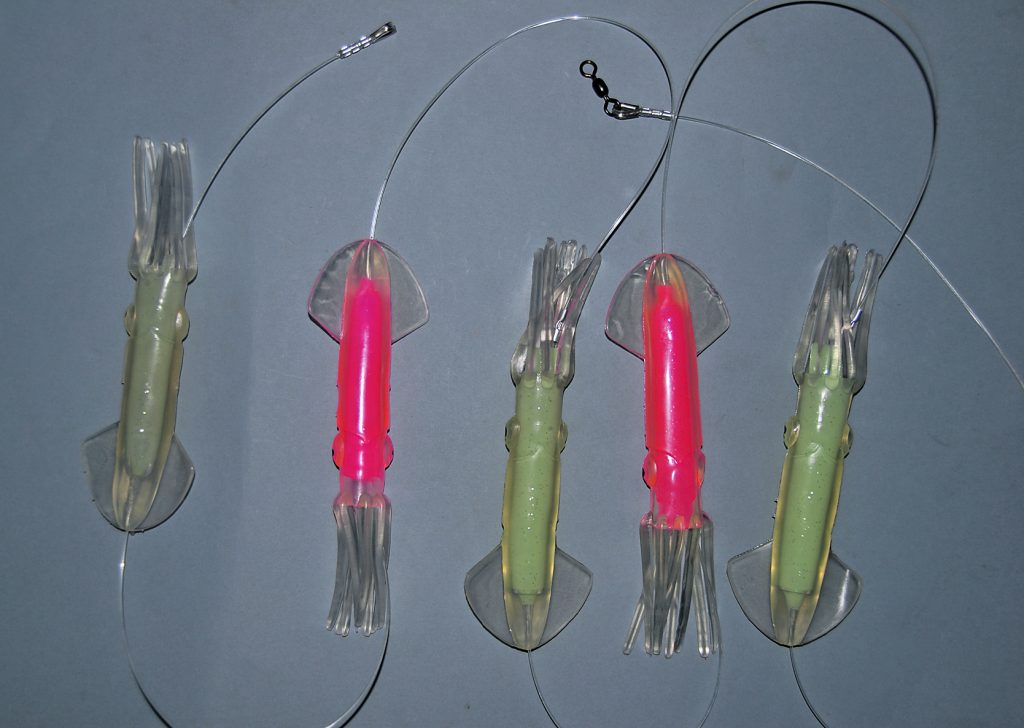
The rest is up to you and lady luck!

